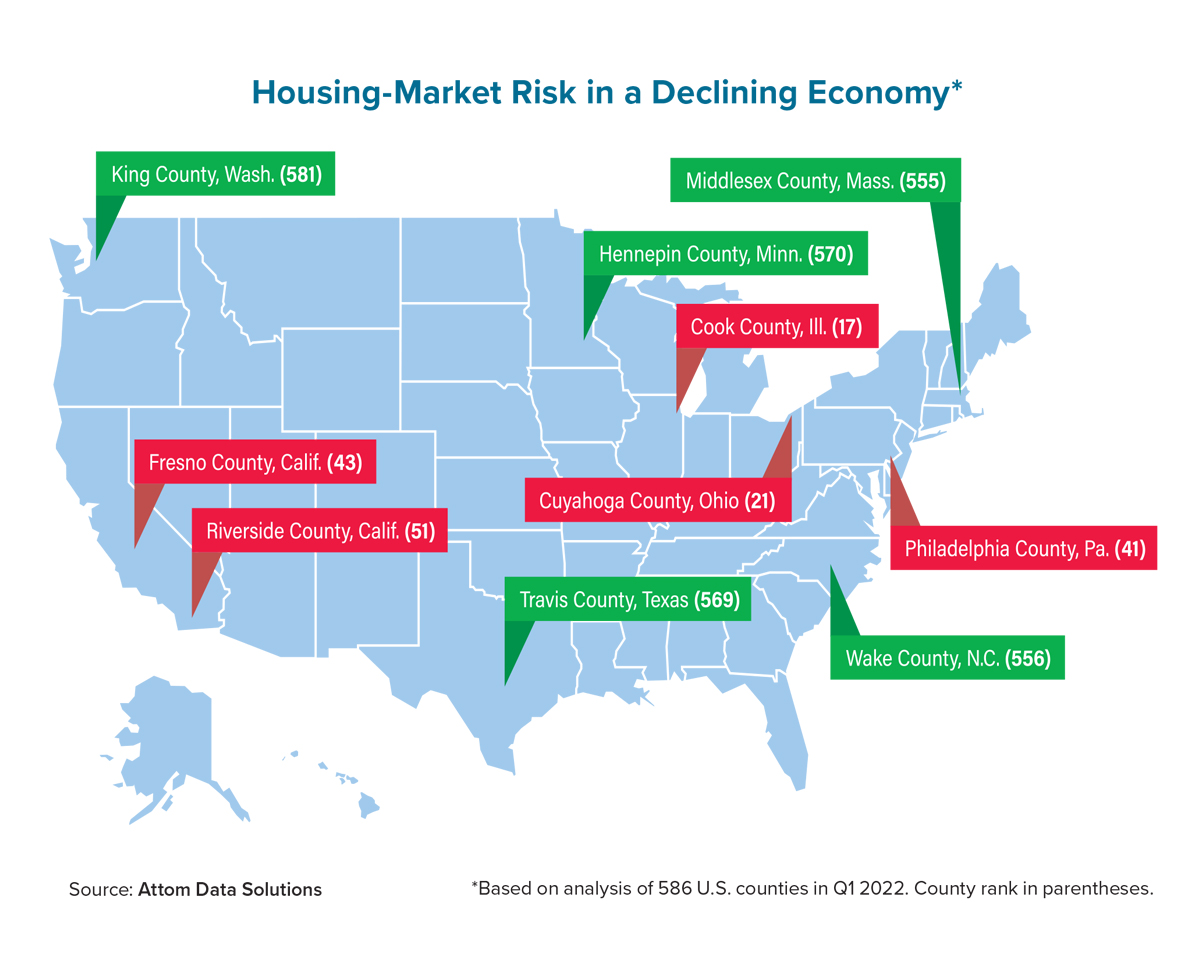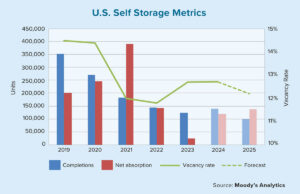Amid economic uncertainties and a fluctuating real estate market, it’s critical to assess the housing markets that are most vulnerable to the effects of a recession or a more modest downturn. In a Special Housing Risk Report released this past June, Attom Data Solutions analyzed 586 counties across the country during the first three months of 2022 and found that the highest concentrations of at-risk markets were in New Jersey, Illinois and California.
The report looked at measurements of home affordability along with rates of underwater mortgages, foreclosures and unemployment to assess which areas were most vulnerable to declines in the housing market. Of the 50 most vulnerable counties, 34 were in New Jersey, Illinois and California, with the largest clusters in the New York City and Chicago metro areas. Chicago had eight counties on this list while New York City had six. And 10 counties scattered across the north, central and southern parts of California were identified among the nation’s 50 most vulnerable.
The remainder of the top 50 counties were located on the East Coast and in the Midwest. Other notable clusters included three counties in both the Cleveland and Philadelphia metro areas, as well as two of Delaware’s three counties. And even though single counties in Texas, North Carolina and Louisiana were ranked among the 50 most vulnerable, the South had the highest concentration of markets considered least vulnerable to an economic downturn.
In fact, 26 of the 50 least vulnerable counties were in the South, while only five were in the Northeast. Tennessee led all states with eight of the least at-risk counties, five of which were in the Nashville metro area. Virginia had five counties among the 50 least vulnerable markets, including three in the Washington, D.C., area. Wisconsin also had a significant number of low-risk counties, placing four inside the top 50.
Among counties with a population of at least 500,000 people, only a handful made the least at-risk list. These include King County (Seattle), Washington; Santa Clara County (San Jose), California; Middlesex County (Boston), Massachusetts; Travis County (Austin), Texas; and Hennepin County (Minneapolis), Minnesota.
The report considered counties more or less at risk based on the percentage of homes that faced possible foreclosure; the share of homes with mortgage balances that exceeded estimated property values; the share of average local wages required to pay for major homeownership expenses on a median-priced single-family home; and local unemployment rates. These metrics play a clear role in the health of any housing market.
Major homeownership costs (mortgage payments, property taxes and insurance) on a median-priced single-family home took up more than 30% of the average local wage in 25 of the 50 most at-risk counties. Nationwide, these expenses consumed 26.3% of the average local wage.
In addition, these highly vulnerable counties had higher percentages of underwater mortgages than the country as a whole. In 22 of the 50 most at-risk counties, at least 10% of all residential mortgages were underwater as of first-quarter 2022, compared to the 6.5% rate for the nation. And unemployment plays a key role, too, as the March 2022 jobless rate was at least 5% in 29 of the 50 most vulnerable counties, compared to the national figure of 3.6% at that time.
Although the U.S. housing boom has been in full swing for more than 10 years, there are some signs of weakening. With interest rates climbing from their historic lows and home prices continuing to rise significantly in much of the country, affordability is becoming a real issue.
Existing-home sales declined in four of the first five months of 2022.
Some types of mortgage delinquencies are on the rise, as are lender-initiated foreclosures. In this climate, it’s critical to examine the housing market on a county-by-county basis to help determine which areas are most (and least) vulnerable to the shifts caused by changing economic headwinds.●
-
Rick Sharga is the executive vice president of market intelligence at Attom Data Solutions. Sharga has more than 20 years of experience in the real estate and mortgage industries, having previously served in executive roles for RealtyTrac, Carrington Mortgage Holdings, TenX and Auction.com. He is one of the country’s most frequently quoted sources on real estate, mortgage and foreclosure trends. Sharga is a founding member of the Five Star Institute’s National Mortgage Servicing Association and is on the board of directors for the National Association of Default Professionals. Learn more about Attom Data Solutions at attomdata.com.
View all posts






